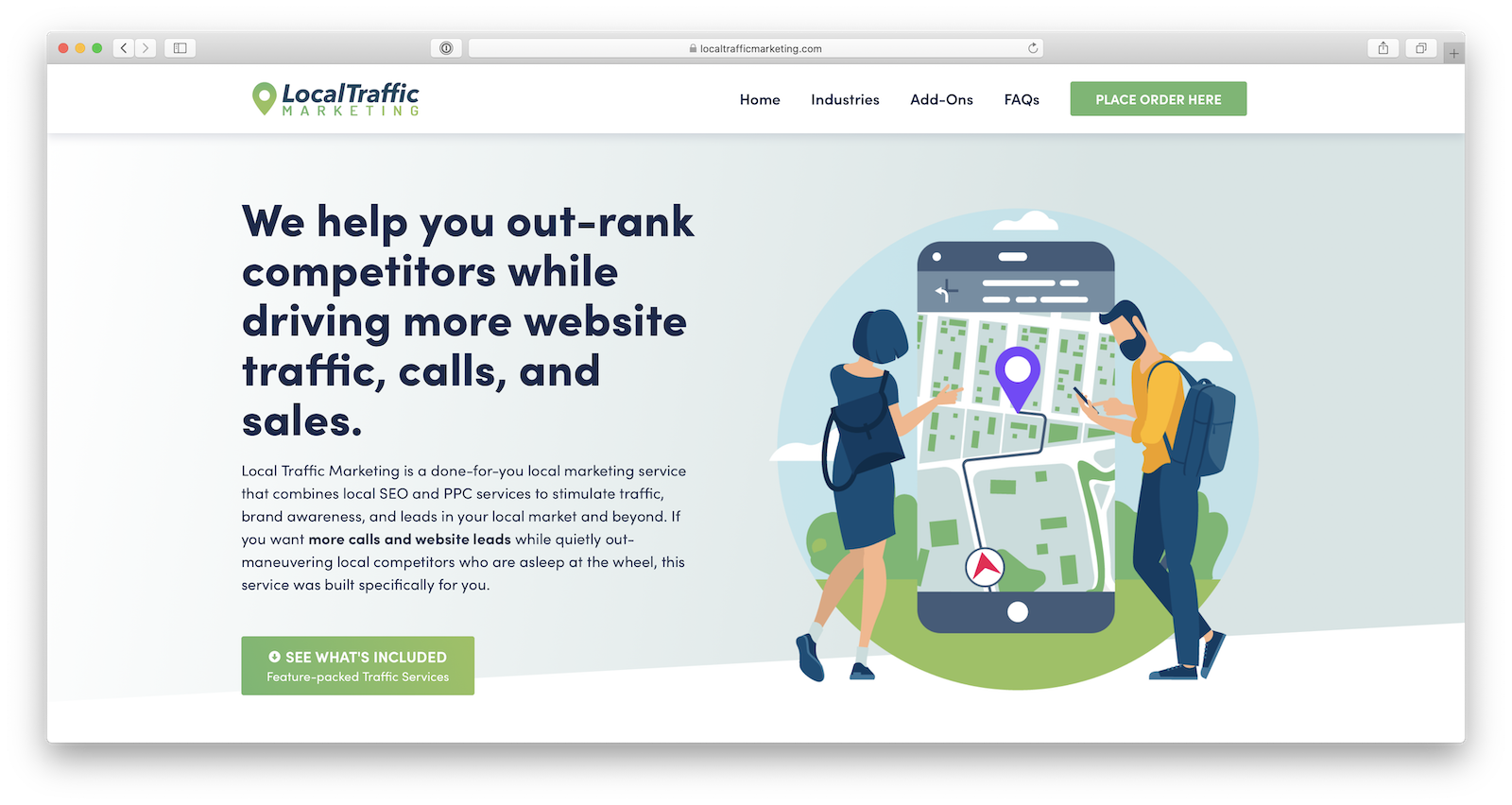
The Future of SEO for Independent Insurance Agents
(Updated for 2020 and beyond)
SEO for insurance agents can be one of the most perplexing practices to understand.
Notice the word “practice“. This is because the game of SEO is a constantly changing process, with many different variables that are constantly in motion. Almost like insurance rates! Mastering it requires ongoing learning and activity, hence the word practice.
With Google becoming smarter and much more aware of naughty “black hat” strategies, SEO in general is becoming more and more challenging, especially for small businesses that just don’t have the time to grasp it all. Google wants to level the playing field and make you earn traffic — the right way.
Whereas PBN’s (private blog networks; used for generating backlinks in mass) could help you rank a site faster a few years ago, Google has attempted to buckle down on such tactics (although they can still work), and put much more of a priority on it’s own network/platform, in particular when it comes to ranking brick-and-mortar businesses like insurance agencies.
More on that in a moment.
Have you heard of Google Panda and Penguin? How about Hummingbird? These are all significant algorithm changes that have been pushed out in the last 5 years or so, that have really made it much harder to “game” their system with a bunch of bogus, low quality backlinks.
Even if you are able to get away with it somehow, the results will are typically short lived at best, and you risk being penalized by Google, something that most agencies don’t have a strong enough domain to recover from.
You want to know what works now in the world of SEO for insurance agencies?
Local Signals + Backlinks + Content.
SEO for insurance agencies in 2020 is not just about blogging. Content creation is definitely a big part of the equation for ranking a site, but it’s not the end all be all, so if you are paying someone to create blog content for you thinking thats all it takes, there is much more to it.
Local signals, and strong/clean backlinks are far more important.
A backlink is when a website has a link (hyperlink) on it that points/links back to your website. The more authoritative the website linking to you, the more SEO value will be passed over to your site.
If you’ve ever heard the term “link juice” that’s what it’s referring to.
Whereas content + backlinks will help rank for broader, more “national” keywords, local signals are the number one ranking factor local brick-and-mortar businesses. A combination of all of those things is what will improve your rank. Not just one of them. All of them need attention.
This is why a lot of insurance agencies struggle with SEO. They don’t have the time to do all of this, and they don’t have the knowledge to do it the right way.
Building backlinks is time consuming and relies heavily on content creation. Since most agencies don’t have time, and most agencies don’t blog, building backlinks for an insurance agency website is honestly next to impossible for most agencies, which is unfortunate because it’s such a big part of the equation.
That being said, you can still move the SEO needle in your agency by focusing on a few other lower hanging fruits — like local signals.
Local signals are the number one ranking factor for insurance agencies
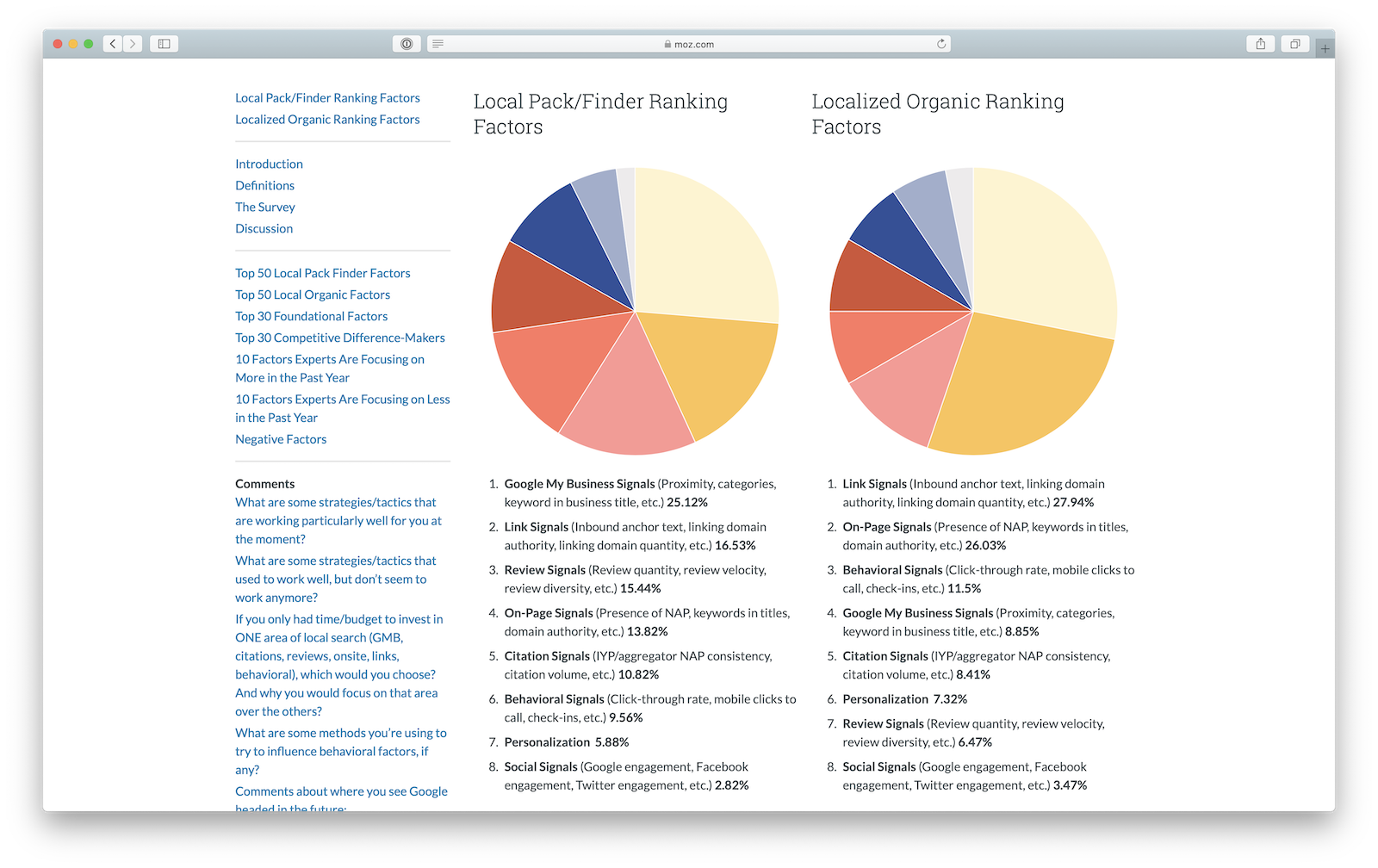
MOZ 2018 Ranking Factor Guide (Still relevant in 2020)
You’re going to hear me say “local signals” a lot in this post, and for good reason. They are hands down the most important part of your business (or website) showing up in a search result for what you sell.
Why? Because Google uses the IP address of the device/person searching to match them with the best possible search results. Meaning the physical location of the person searching is what Google is using to show results.
If your agency is in Houston Texas, and someone searches from Dallas with the keyword “texas insurance agencies”, no matter how hard you try to rank for that keyword, Google is going to show that person results from the Dallas area because they physically were located in Dallas when they searched.
You can put the keyword “texas insurance agencies” all over your website, and you would still probably lose in that situation.
Google is using “local signals” to match that searcher with the most relevant, local result.
When you hear me say local signals, this is what I’m referring to:
- GMB profile optimization (Google My Business)
- GMB activity (posts, images & reviews)
- NAP citation signals (business listings)
- On-page website optimizations
- Google Local Ads
Your Google My Business profile (GMB) is as important as your website
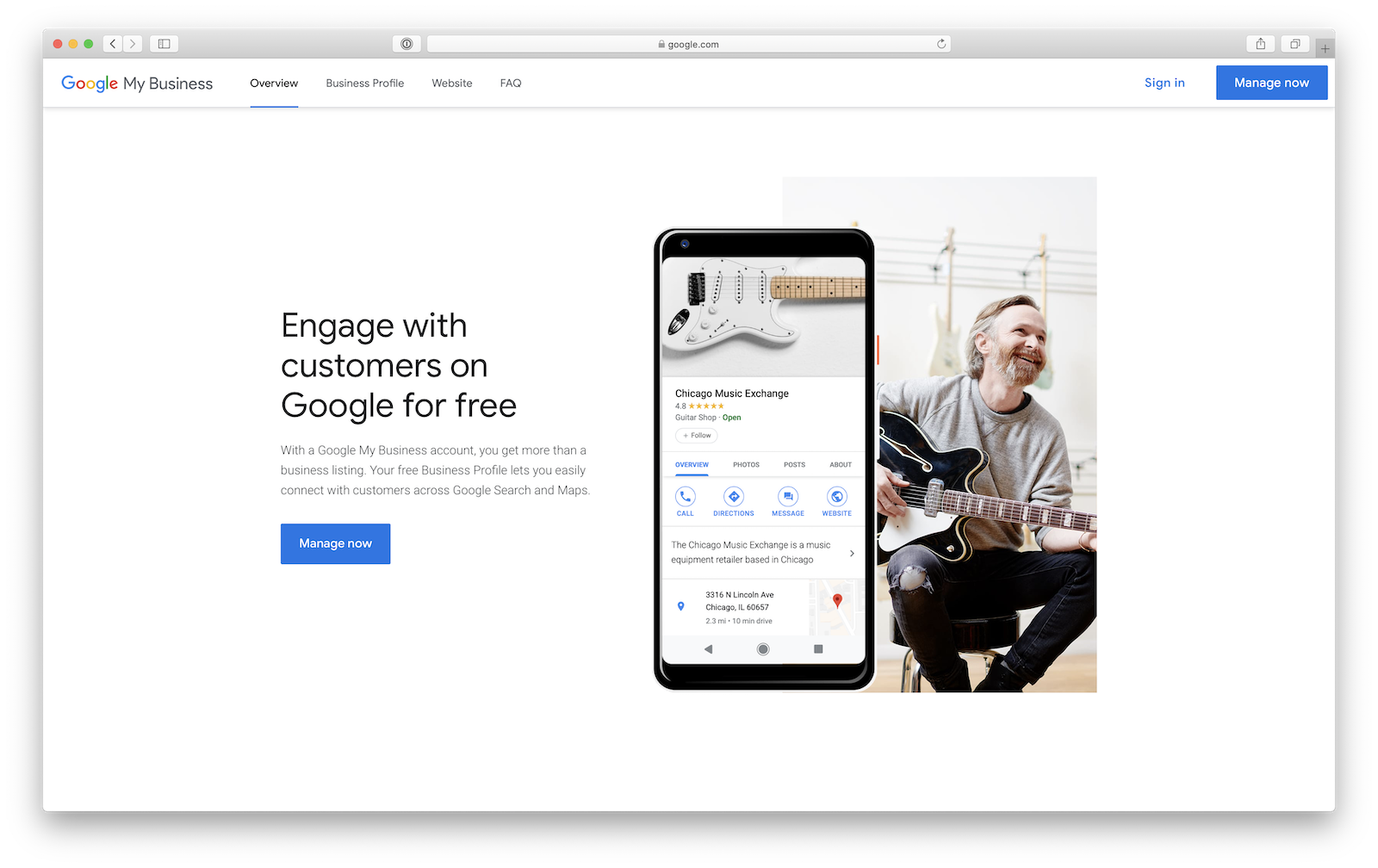
While a lot of insurance agencies have GMBs, most of them aren’t doing anything with them. They set their profile up like a yellow pages profile 10 years ago, and haven’t looked at it since other than to maybe check when Google reviews come in. But the GMB is a critical part of your SEO game plan — probably the most important.
Your GMB is why your business shows up in what’s called the “map pack”. The map pack is the top 3 results (or 4 if there is an ad showing) that show when you search for a business in Google. The map pack results get between 40-90% of the clicks in a given search query, so being in that map pack is extremely important if you want to show up in search.
If you’re not in the map pack, you’re not going to get nearly as many opportunities from search, and from your website, at least from an organic traffic perspective.
So how do you show up there? Three ways — optimizing your GMB listing, and keeping it active, and running ads. We actually do this as a service for our customers.
One of our SEO clients is actually showing up twice in the map pack because of our Local Traffic Marketing (LTM) program. He’s getting a lot of traffic, calls, and leads because if this.
LTM is our traffic generation & SEO service built for insurance agencies that is built on a backbone of SEO, PPC, and engagement retargeting. As you can see, his agency is showing twice out of a possible four positions. He is dominating his competition because of this!
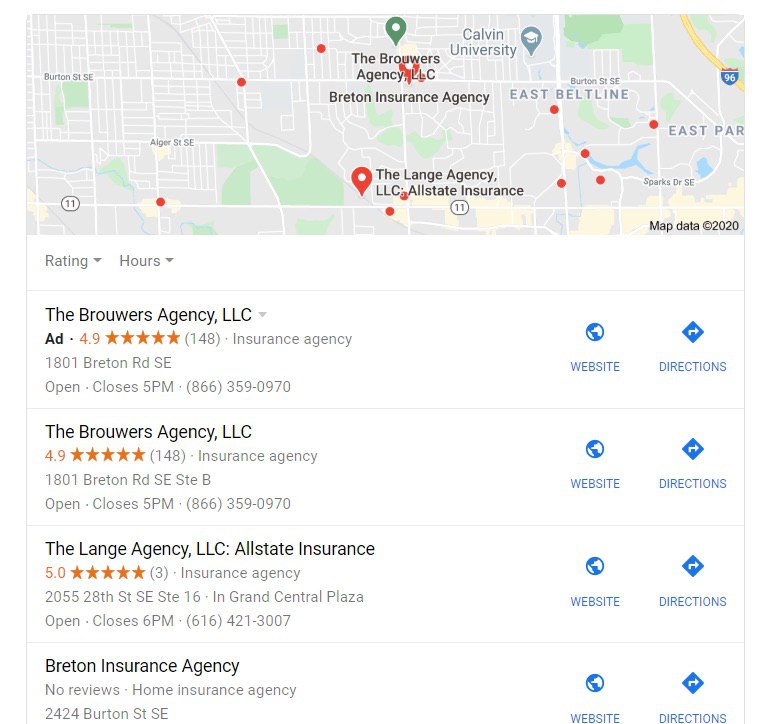
Our program is a combination of GMB optimization and management (posting and review management) as well as highly targeted Google and Facebook ads. We help people show up in the map pack twice, and crush it with more traffic. When then retarget all of that traffic with retargeting campaigns to increase conversions. If you don’t have the time or team to do these things yourself, definitely check it out and watch the demo!
Content is still important for SEO
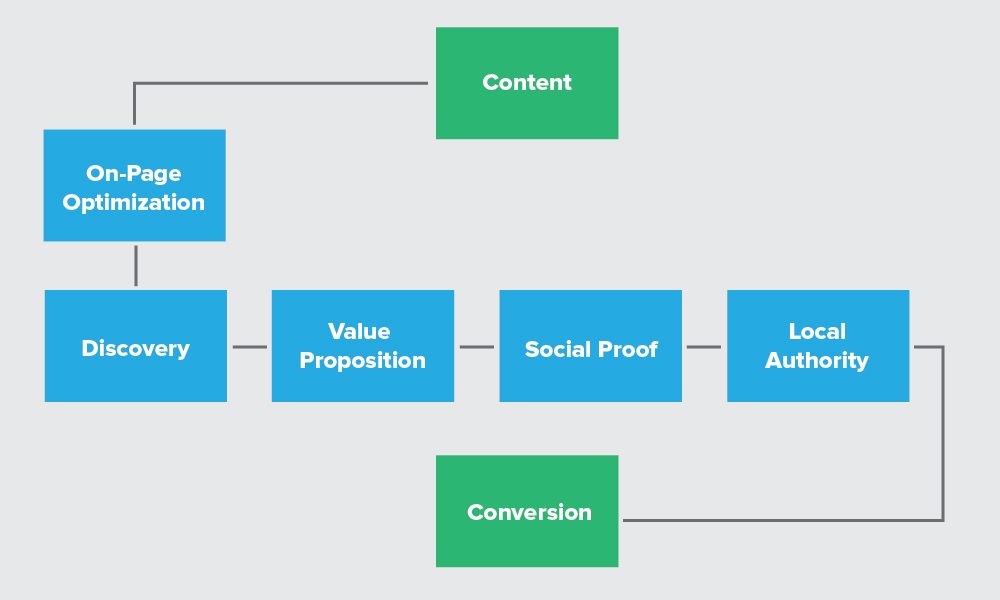
Content creation (blogging) is still part of the SEO equation. The two work hand-in-hand, and content definitely leads to more conversions in certain industries.
Sure, on-page SEO is still important, and we can talk about on-page strategies until we’re blue in the face, but you must have content first in order to optimize it.
How does Google work?
Google is in the business of helping people find the most helpful and comprehensive solutions to their problems or questions. Without being able to do this, Google would not exist. It’s the basis of which their entire business model is built.
In technical terms though, the way Google works is they send search engine bots/spiders to crawl websites for information (text), and then store that information (text) in their index (database) so it can be retrieved later by someone who is searching for it. That part isn’t so complicated.
Notice how I said text though? Google crawls text, and follows links.
Without text content, Google has nothing to judge your website by, and therefore won’t trust it enough to give it priority in search results. It’s really that simple.
If you want to drive traffic to your website organically (for free) with SEO strategies, you have to earn the trust of Google and one of the biggest ways you can do that is by acquiring backlinks from other websites (especially authoritative sites with high domain authority).
Here’s the thing though: without quality content, no one has a reason to link to your site — and they won’t.
Don’t take my word for it, dozens of authoritative SEO experts have been saying this for a few years now, and Google has recently said this exact thing themselves when they released their recent Search Quality Rating Guidelines.
Google ranks quality (and often long form) content — period.
Why SEO for insurance agents is difficult

When it comes to SEO strategies for insurance agents, it’s increasingly difficult to make headway in search results. Why?
There are three main reasons for this:
1.) Insurance is one of if not the most competitive industry when it comes to online marketing. It has one of the highest PPC costs out there. There are thousands of competitors in your space who are all vying for the same customer. Not only are you competing with other local independent agencies, but you’re competing with big brands who can simply out-spend and out-maneuver smaller less resourceful agencies online.
2.) Speaking of which, companies like Allstate, State Farm, Geico and Progressive have a stronghold on essentially all of the “head” keywords for insurance in Google. This means it’s virtually impossible for a smaller independent agency to rank for something as general (and competitive) as “Florida Auto Insurance”.
3.) Most insurance agencies struggle big time with creating unique content (or any content at all) that can be ranked or linked to, in Google. Many agencies simply don’t want to take the time to create quality content for their website, and that’s a major problem if you’re expecting leads to come in from your agency website organically.
Difficult doesn’t mean impossible though
Advisor Evolved has multiple website clients who have been putting in the effort, and being creative, who are seeing real results as a result of their content creation efforts.
Being that many of the “head” keywords are on lock down, insurance agencies need to take a more laser focused, hyper local approach with their website and content creation, as well as target niche lines of business that aren’t as competitively marketed.
You need to own your own backyard before you can own someone else’s.
With that in mind, it’s important to understand the 3 main degrees of influence, and how they can help you rank in Google, and generate real ROI from your agency website.
The 3 Degrees of Influence
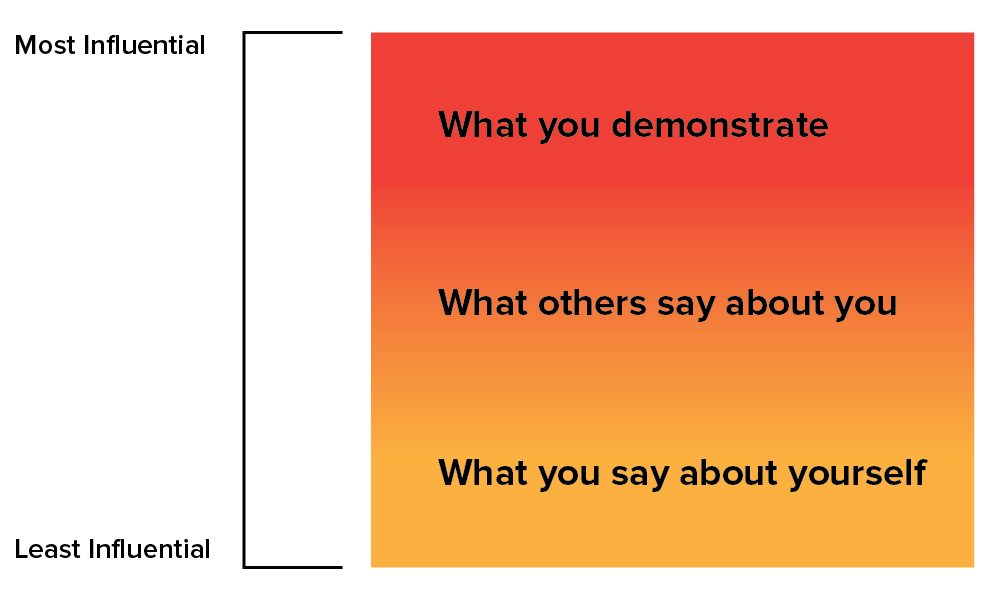
Let’s elaborate on how these 3 things apply to your insurance agency:
What you say about yourself:
This is where almost everyone in the insurance agency space hangs out. For years, this industry has been a shouting match between direct writers, captives, and independents alike, about how they are all the best insurance providers around.
“We’re the best. No, we’re the best! No, we’re the best”
It’s easy for some agencies to talk about how great they are, and honestly there’s nothing wrong with being proud of the business you’ve built and having confidence in yourself. Nothing at all.
The issue is though, that doesn’t resonate with the modern consumer. It’s not about you — it’s about your customers.
Instead of talking about yourself, you need to talk about your clients, and how you can help solve their problems.
This means that your value proposition and corporate messaging shouldn’t always (or maybe never) be “we’re independently owned, and have been serving our community for 40 years….”
The point here is, talking about yourself holds the least amount of credibility because there’s no basis behind it besides what you yourself say, and of course you’re not going to paint yourself in a negative light.
What other people say about you:
When someone comes to your agency website, it’s important that there is some (or maybe a lot of) social proof on the home page. This is by the way something that every Advisor Evolved website has built into each design.
When there is visible proof that a peer has had a positive experience with your agency, the chances of you converting your visitor into a lead or client literally skyrocket.
Having customer reviews on your website and having them in Google are two different things though.
You need reviews to be on your site to pacify the visitor, and give off a positive impression. You need them in Google, so that Google sees that you are a trusted company/website who people have had a good experience with.
One of the most important things you can do for your insurance agency’s SEO is by asking your clients to leave you reviews on your Google Business page. Getting reviews on Facebook and Yelp are also helpful, but there is no more important place to get customer reviews than in Google itself.
You do have a verified Google Business page don’t you?
What you demonstrate:
Every insurance agency owner should have one goal: becoming a local authority on insurance.
People buy from, and trust authority. People trust other people and brands not because they’re necessarily better quality, but purely because they’ve heard of them. It’s kind of ridiculous sometimes, but understandable.
Becoming an authority simply isn’t possible without building brand awareness, and showing off your knowledge about insurance. This means you have to consistently create content for your agency website that shows visitors that you know what you’re talking about when it comes to insurance.
This is where blogging and content promotion is crucial for your SEO and agency website.
I’ve mentioned before that companies that blog generate approximately 55% more leads than companies that don’t. Blogging works folks. I just does. It shows Google and visitors that you know what you’re talking about, which builds credibility with both parties.
With this being said, lets look at the graphic once again:
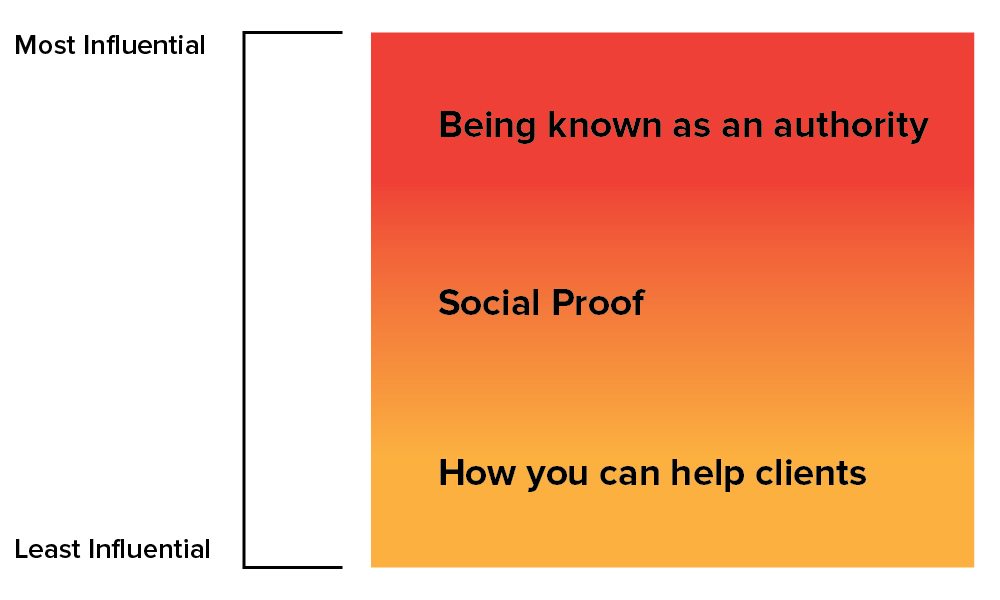
What insurance agents in 2020 and beyond should do to improve their SEO

If you’ve gotten to this point and are still somewhat lost, let me make it simple for you as to what you need to do to for your SEO going forward:
1.) GMB — as I mentioned earlier your GMB is critical to your SEO and lead generation from organic search. It’s the number one factor. You need to post content each week, and get as many Google reviews as possible (and make sure you reply to every single review). We do this for our LTM customers.
2.) Content — Consistently create long form (pages and posts that are around 2000-2500 words long), link-worthy content your website that paints you as a knowledgeable authority (blogging, video, audio, etc..). This is a crucial step in improving your search engine visibility so make time to do it.
Link Building Pro tip: don’t just create that content for your insureds. You must also create it for people who have the power and ability to link to your website. Just think about that for a second.
3.) Social Proof — Make sure you have social proof on your website, preferably on the home page of the site. As I mentioned previously, this is extremely easy to do if you are an Advisor Evolved client with the use of our Conversion Cards tool.
4.) Hyper Local — Earlier I said you need to own your “own backyard before you can own someone else’s”. While you may be licensed to sell insurance in multiple states, your chances of converting a local resident into a client in the city your office is located are much, much higher. This is where your time, money and energy are best spent.
This means that with your website and content, you shouldn’t be trying to compete on highly competitive “head” keywords. Instead of trying to be everything to everyone, use medium and “long tail” keywords that target your local area.
This will give you a better chance of being found in search results as opposed to trying to compete for generic and competitive terms like “auto insurance north carolina”.
Here’s what I mean by “head” and “long tail” keywords:
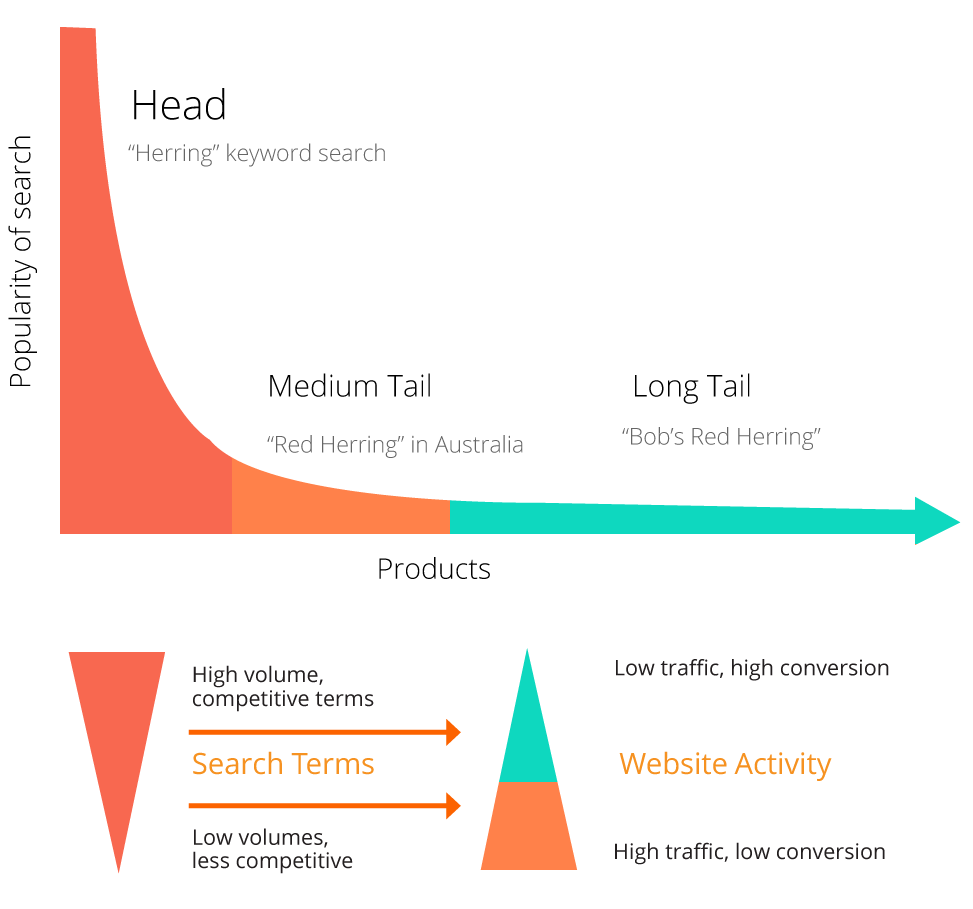
In layman’s terms, medium and long tail keywords are much more focused and detailed. So when you’re creating content for your insurance agency website, let’s say you’re trying to rank for auto insurance, you’re not going to create the page or post based around “auto insurance” because it’s way to competitive.
You’re going to be more detailed, and focused on your geographical location, so “auto insurance wilmington delaware” would be an example of a long tail keyword, whereas “auto insurance” is an example of a “head keyword”
See how that works? It’s really not the complicated.
5.) Promotion — Once you have content created, promoting it is the next step. You don’t need to write a blog article every week. In fact, it’s better to create one article per month that is high quality, and spend the rest of the month promoting it on social media, your email list, and other centers of influence (realtors, lenders, etc..)
A tool I love and use for social media promotion is Buffer. If you’re not using it yet, start using it now. It makes life easier, and is very easy to use.
When it comes to content create, remember, Google values quality over quantity.
Conclusion
SEO can be as easy or complex as you let it be, and at the end of the day, out of all the different variables that go into SEO, you are the most important one.
At the end of the day, we’re all playing Google’s game, so it’s important to do what’s working now, and not what worked 3 years ago. Just like in life, one of the only things guaranteed is change.
If you have any questions about SEO, feel free to leave us a comment below, and definitely check out our done-for-you Local Traffic Marketing program.
